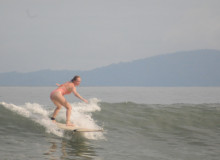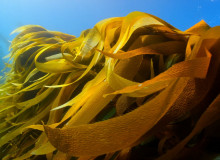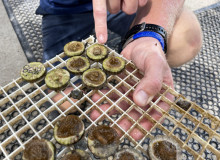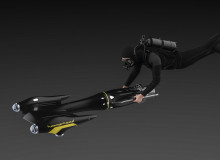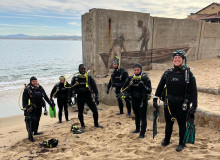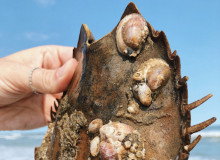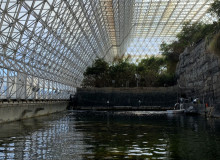ocean
George Washington University
Hurricane-battered coastlines are disappearing due to the climate crisis. Without intervention, my community and the town I grew up in are threatened.
University of Georgia
Surf’s up! Learning to fall flat, get up, and keep going while abroad in Costa Rica.
Georgetown University
How making kelp commonplace in our diets and adapting harvested biomass into various materials will help both humans and the planet.
Northwestern University
ONDA Design is working to counteract coral disease and bleaching by developing technology for coral restoration and rehabilitation, Catherine Odom reports.
University of Rhode Island
Inspired by 360-degree cameras utilized by Google Street view, the Ocean Agency developed the Hammerhead Camera, a similar camera designed to be used in an underwater environment, according to Richard Vevers, Ocean Agency founder and CEO.
Middlebury College
Escaping in nature used to be a refuge. But this haven has been frequently soured by reminders of what we are doing to our planet, as it's now impossible to escape signs of human impact.
George Washington University
The coasts offer a window into the function of relational ecology in sustainable development: to address the question of how a community's connection to the ocean impacts the development of aquaculture.
UA School of Journalism
You’re standing on a beach. Warm sunlight streams down, filtering through not just clouds but a geometric glass walls and ceiling. Welcome to the Biosphere 2 Ocean. Hannah Johnson reports for El Inde.
.jpeg%3Fitok=0Jq_3dqj)
Pacific sockeye salmon during the annual migration. The Canadian government recently announced its (CAD) $647 million Pacific Salmon Strategy Initiative. “Hopefully it’s not too little, too late,” says marine campaigner Emmie Page (Image by Oregon State University/https://creativecommons.org/licenses/by-sa/2.0/deed.en).
Northwestern University
In June 2021, a heat wave spread over the Pacific Northwest, with people in the region wilting from record high temperatures. But, Fiona Skeggs reports, the threats are soaring for rivers and marine life as well.
.jpg%3Fitok=0feISmxB)
(Terry Goss/Wikimedia Commons https://commons.wikimedia.org/wiki/File:White_shark.jpg)
George Washington University
Marine scientists are using information collected by everyday people to monitor sharks in the face of climate change.

